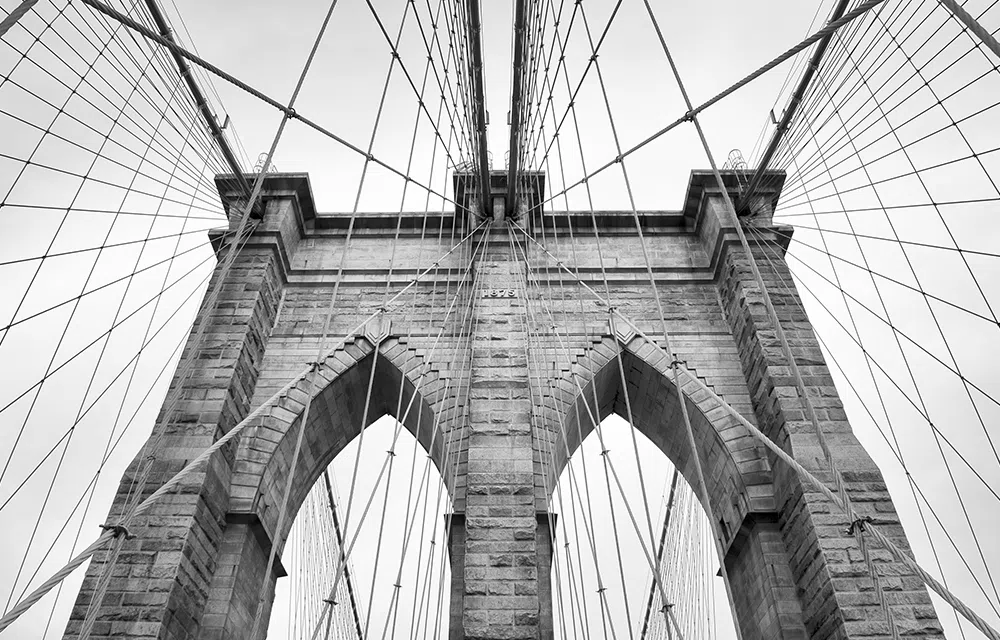The top 10 list is far from the only story in our study. There are many other metro areas to recognize for their outstanding performance in one particular metric. Although their combination of factors may not add up to a winning hand, the metro areas that top our “mini lists” are doing something right. That ace they’re holding could anchor a future low-carbon transportation strategy.
For example, Dallas and Houston top our circuity ranking. Travel there is very direct from point to point, and such a well-planned city may find options for shifting travel to transit routes. Chicago, Portland, and Allentown almost made our top 10, and each can examine where they are on the mini-lists to see opportunities for improving their transportation carbon footprint.
What about those at the bottom of our mini lists? Notice that some, notably New Haven and Lancaster, also show up toward the top of our overall Top 100 list. This illustrates the complexity of transportation planning. Obviously a region doesn’t have to do everything “right” to produce a winning result.
VEHICLE MILES TRAVELED
We weighted VMT highly for our list for the simple fact that the more miles a vehicle travels, the more emissions it produces. An idling engine today is far more efficient than it used to be, so travel times aren’t a very useful measure of emissions.
StreetLight’s personal-vehicle VMT measures the average miles traveled per device per day for each device in the metro area. Our top-ranked cities have the lowest VMT across the country. In other words, lucky drivers in these cities can generally get where they want to go by taking short car trips.
Lowest (best) VMT
- Lancaster, PA
- Harrisburg-Carlisle, PA
- Stockton-Lodi, CA
- New Haven-Milford, CT
- Bridgeport-Stamford-Norwalk, CT
- Scranton–Wilkes-Barre–Hazleton, PA
- Allentown-Bethlehem-Easton, PA-NJ
- Worcester, MA-CT
- Springfield, MA
- Madison, WI
Highest (worst) VMT
- Dallas-Ft. Worth-Arlington, TX
- Houston-The Woodlands-Sugar Land, TX
- Chicago-Naperville-Elgin, IL-IN-WI
- St. Louis, MO-IL
- Phoenix-Mesa-Scottsdale, AZ
- Minneapolis-St. Paul-Bloomington, MN-WI
- Detroit-Warren-Dearborn, MI
- Kansas City, MO-KS
- Atlanta-Sandy Springs-Roswell, GA
- Cincinnati, OH-KY-IN
Bike and Pedestrian Commutes
While high VMT is a bad thing for transportation emissions, bike miles traveled (BMT) and pedestrian miles traveled (PMT) is a good thing. We analyzed commutes in particular because leisure riding and workouts don’t necessarily replace a vehicle trip, but commutes do. Replacing daily driving with an eco-friendly mode can make a significant dent in a city’s emissions.
Rather than simply analyze all peak morning and evening trips (which could include recreational activity), we analyzed peak morning trips originating from home locations and ending at work locations, and peak afternoon trips originating from work locations and ending at home locations.
Both BMT and PMT commutes measure length of trip per device. This means that two cities may end up with similar rankings although one city has fewer, longer trips, while the other has more frequent but shorter trips.
We assume that bike commutes are likely to be longer than walking commutes, so they would likely replace more miles traveled by car. For that reason we weighted bike commutes slightly higher than pedestrian.
Most commuting bike miles traveled
- Philadelphia-Camden-Wilmington, PA-NJ-DE-MD
- New York-Newark-Jersey City, NY-NJ-PA
- Chicago-Naperville-Elgin, IL-IN-WI
- San Francisco-Oakland-Hayward, CA
- Boston-Cambridge-Newton, MA-NH
- Des Moines-West Des Moines, IA
- Portland-Vancouver-Hillsboro, OR-WA
- San Jose-Sunnyvale-Santa Clara, CA
- Washington-Arlington-Alexandria, DC-VA-MD-WV
- Cape Coral-Fort Myers, FL
Least commuting bike miles traveled
- Augusta-Richmond County, GA-SC
- Bakersfield, CA
- Lakeland-Winter Haven, FL
- Springfield, MA
- Deltona-Daytona Beach-Ormond Beach, FL
- Harrisburg-Carlisle, PA
- Riverside-San Bernardino-Ontario, CA
- Scranton–Wilkes-Barre–Hazleton, PA
- Winston-Salem, NC
- Oklahoma City, OK
Most commuting pedestrian miles traveled
- New York-Newark-Jersey City, NY-NJ-PA
- Washington-Arlington-Alexandria, DC-VA-MD-WV
- Miami-Fort Lauderdale-West Palm Beach, FL
- Greenville-Anderson-Mauldin, SC
- San Francisco-Oakland-Hayward, CA
- Knoxville, TN
- Columbia, SC
- Jackson, MS
- Tulsa, OK
- Tampa-St. Petersburg-Clearwater, FL
Least commuting pedestrian miles traveled
- Las Vegas-Henderson-Paradise, NV
- Worcester, MA-CT
- Stockton-Lodi, CA
- Springfield, MA
- Youngstown-Warren-Boardman, OH-PA
- Grand Rapids-Wyoming, MI
- Phoenix-Mesa-Scottsdale, AZ
- Riverside-San Bernardino-Ontario, CA
- Lancaster, PA
- San Diego-Carlsbad, CA
TRANSIT
Planners often point out that paint is cheaper than rails or buses, meaning that transit infrastructure is expensive to build and maintain compared to adding bike lanes. Because not every city has the resources or demand for a robust transit system, we weighted it less than bike and pedestrian commuting.
We pulled our transit rankings directly from the American Public Transportation Association (APTA) 2019 Public Transportation Fact Book, which ranks the country’s top 50 urbanized areas by per-capita transit ridership. We also used APTA’s population and ridership numbers to calculate additional metro areas on our list that weren’t included on APTA’s “most transit travel” list. We gave cities not rated by APTA a zero score (all are ranked as #48).
Highest per-capita transit ridership
- New York-Newark-Jersey City, NY-NJ-PA
- San Francisco-Oakland-Hayward, CA
- Boston-Cambridge-Newton, MA-NH
- Washington-Arlington-Alexandria, DC-VA-MD-WV
- Seattle-Tacoma-Bellevue, WA
- Chicago-Naperville-Elgin, IL-IN-WI
- Philadelphia-Camden-Wilmington, PA-NJ-DE-MD
- Portland-Vancouver-Hillsboro, OR-WA
- Los Angeles-Long Beach-Anaheim, CA
- Baltimore-Columbia-Towson, MD
CIRCUITY
When traveling from point to point, only birds can take the shortest, most direct route. Those of us on the ground get to our destination via some degree of roundabout-ness, or circuity. Circuity is simply the difference between the actual route taken versus a straight line between origin and destination.
A city with high circuity means drivers are taking “the long way around” to get where they want to go, maybe even circling to find parking spaces. Transportation network service activity (ride-hailing services) can also contribute to high circuity, as drivers cruise around waiting for customers, and driving to pick them up.
We included circuity as a way to rate successful transportation planning. The lower a city’s circuity, the more efficient its travel patterns are
Lowest (best) circuity
- Lancaster, PA
- Greenville-Anderson-Mauldin, SC
- Dallas-Ft. Worth-Arlington, TX
- Provo-Orem, UT
- Minneapolis-St. Paul-Bloomington, MN-WI
- Riverside-San Bernardino-Ontario, CA
- Houston-The Woodlands-Sugar Land, TX
- Milwaukee-Waukesha-West Allis, WI
- Kansas City, MO-KS
- Chicago-Naperville-Elgin, IL-IN-WI
Highest (worst) circuity
- New Haven-Milford, CT
- Springfield, MA
- Las Vegas-Hendersonville-Paradise, NV
- New Orleans-Metairie, LA
- Chattanooga, TN-GA
- Salt Lake City, UT
- Stockton-Lodi, CA
- Bridgeport-Stamford-Norwalk, CT
- Providence-Warwick, RI-MA
- Colorado Springs, CO
Population Density
Analyzing population density (number of residents per square mile of the metro area) shows us that transportation management at some point becomes a team sport. Density (and to some extent, circuity) leads us into land use, and whether or not planners are optimizing an area for how residents want to use it.
Densely populated cities have residential locations close to commercial and work areas. People who live near their regular destinations are more likely to take transit, walk, or hop on a bike as a reasonable alternative to driving.
Less dense cities sprawl ever outward, forcing residents to turn to cars for longer trips.
Highest (best) population density
- Los Angeles-Long Beach-Anaheim, CA
- New York-Newark-Jersey City, NY-NJ-PA
- San Francisco-Oakland-Hayward, CA
- Philadelphia-Camden-Wilmington, PA-NJ-DE-MD
- Bridgeport-Stamford-Norwalk, CT
- Detroit-Warren-Dearborn, MI
- Boston-Cambridge-Newton, MA-NH
- New Haven-Milford, CT
- Chicago-Naperville-Elgin, IL-IN-WI
- Miami-Fort Lauderdale-West Palm Beach, FL
Lowest (worst) population density
- Boise City, ID
- Ogden-Clearfield, UT
- Spokane-Spokane Valley, WA
- Provo-Orem, UT
- Albuquerque, NM
- Bakersfield, CA
- Tucson, AZ
- Jackson, MS
- Wichita, KS
- Salt Lake City, UT







